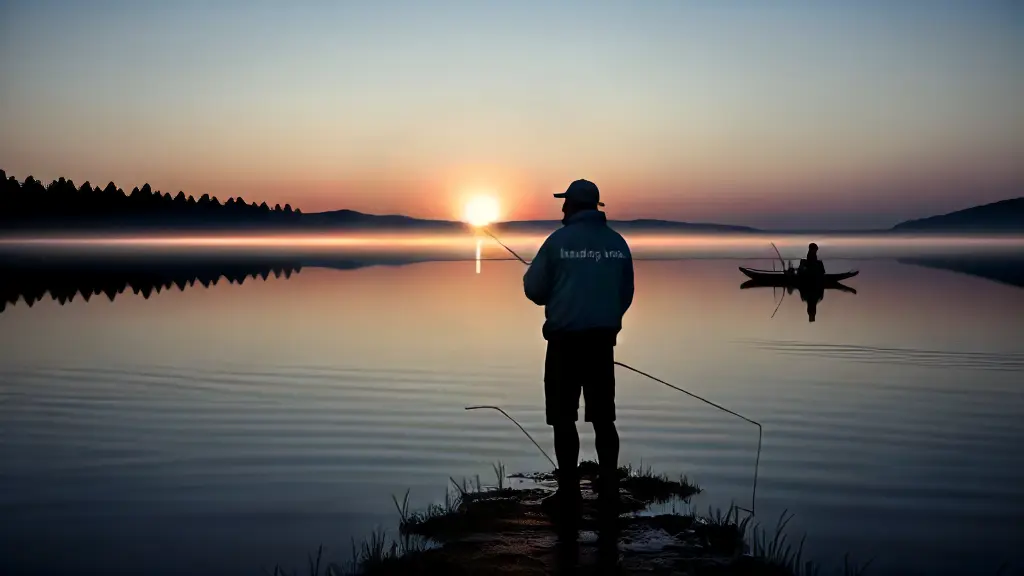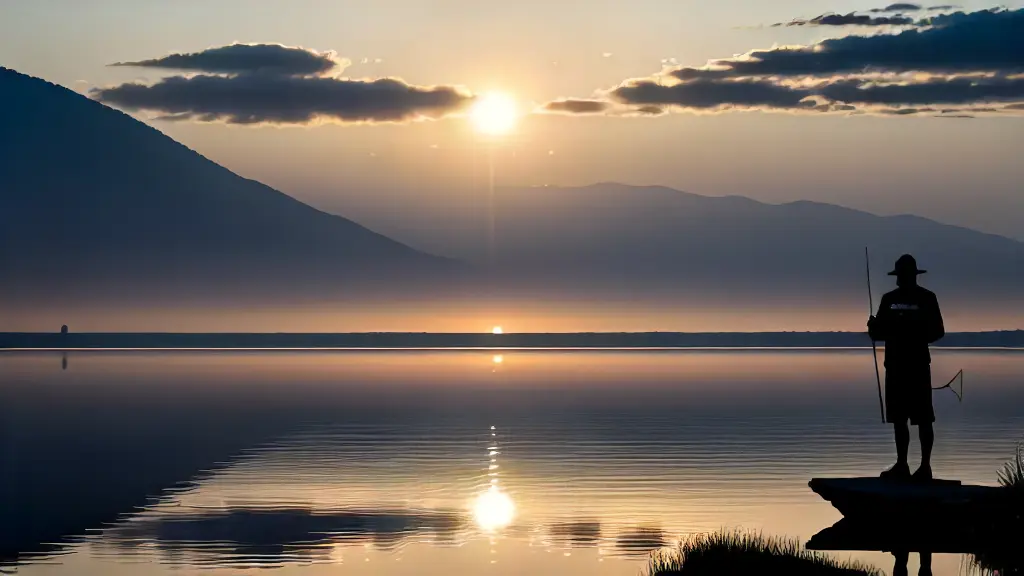Best Rod Length for Walleye Fishing

As the sun rises over the freshwater lake, the tranquility of the morning is suddenly disrupted by the sound of a fish breaking the surface. A moment of excitement for any angler, but for those targeting species like Walleye, it’s crucial to have the right gear to capitalize on this opportunity.
When it comes to Walleye fishing, many anglers overlook the importance of rod length.
This crucial aspect of your tackle can greatly impact your fishing experience, from casting distance and accuracy to sensitivity and feel.
In Walleye fishing, rod length is a crucial consideration. A rod that’s too short may struggle to cast at longer distances, while a rod that’s too long may be difficult to maneuver in tight spaces. The approach to targeting Walleye species requires careful matching of fishing gear, tackle, and rigging to the approved presentation methods for freshwater lake, river, and stream fishing.
Whats the Ideal Rod Length for Walleye
Fishermen often underestimate the importance of rod length when pursuing walleye, a species that thrives in the murky depths of lakes and rivers. We’ll explore the ideal rod length for reeling in these elusive fish.
As we navigate the world of walleye fishing, it’s crucial to understand the significance of medium action rods, which typically measure between 6 and 7 feet in length.
This range provides a delicate balance of sensitivity, allowing anglers to detect subtle bites, and backbone, making it easier to set the hook effectively in the midst of a fierce battle. The ideal rod length for walleye fishing is influenced by water conditions, with the optimal length often dependent on the water’s depth, structure, habitat, and bottom composition.

Fishing Gear Matters
As the wind whispers secrets to the water, fishermen and women must be prepared to adapt their gear to the unforgiving forces of nature.
Rod length, in particular, plays a vital role in withstanding harsh weather conditions, as it directly impacts the fisherman’s ability to maintain balance and stability while battling a catch. Fishermen often overlook the subtle yet crucial factors affecting rod length selection, which can significantly impact their fishing experience.
How Walleye React to Rod Length Matters
When a fisherman’s grip on the rod feels just right, it’s often a sign that the rod length is tailored to their unique fishing style. The ergonomics of the rod can make all the difference between a comfortable and a frustrating experience.
Rod length plays a significant role in walleye senses, particularly sight, sound, and touch.
Electroreception also comes into play, allowing walleye to detect subtle changes in their environment.
As you experiment with rod length, it’s essential to consider how it affects walleye action. A shorter rod can lead to a more aggressive bite, while a longer rod can result in a more subtle reaction. To achieve optimal results, it’s crucial to experiment with different rod lengths to find the sweet spot that provides the perfect balance between grip.
Targeting Species with Best Rod Length
Fishing for success requires a nuanced understanding of the species you’re targeting, and one crucial factor is the rod length. A well-chosen rod can make all the difference in the world, as it allows you to present your lure or bait with precision and finesse.
Walleye are a popular game fish, known for their elusive nature and strong fighting ability.
To increase your chances of landing a walleye, it’s essential to understand their behavior and habitats.
For instance, walleye tend to congregate in areas with rocky structures, weed beds, and sunken logs, where they can ambush prey. Targeting Species
- Walleye behavior and habitats
- Understanding walleye feeding patterns
- Fishing techniques for different walleye species
- Walleye tend to congregate in areas with rocky structures, weed beds, and sunken logs, where they can ambush prey.
- Fishing for walleye requires a nuanced understanding of their behavior and habitats, including their feeding patterns.
- A well-chosen rod can make all the difference in the world, as it allows you to present your lure or bait with precision and finesse.
- Fishing techniques for different walleye species can be optimized by considering various factors, including handling, performance, characteristics, features, benefits, drawbacks, advantages, and disadvantages.
- A rod length of 6-7 feet is ideal for most fishing applications, as it provides a good balance between precision and power.
- Short rods (less than 5 feet) are best suited for precise casting situations, such as drop-shotting or finesse worms, where a delicate touch is required.
- Long rods (over 7 feet) are ideal for precise calibration and testing, as they allow for more control over the lure and presentation.
- A rod length that is too short can result in a presentation that is too aggressive, while a rod length that is too long can result in a presentation that is too soft.
- A medium-action rod is often considered the gold standard for walleye fishing, offering a balance of sensitivity and power.
- A rod constructed from high-quality graphite or carbon fiber can provide a sensitive tip and a strong backbone, ideal for detecting subtle bites and fighting strong fish.
- There is no one-size-fits-all solution for the optimal rod length for walleye fishing, as it depends on various factors including water conditions, angling strategies, species-specific behavior, fishing tactics, rod construction, material choice, design considerations, water depth, fish habitat, aquatic structure, fishing approach, and walleye behavior.
- Choosing the wrong rod can lead to frustration and empty catches, making it essential to select the right rod for a successful walleye fishing experience.
Considering various factors, including handling, performance, characteristics, features, benefits, drawbacks, advantages, disadvantages, and considerations, allows for optimized angling experiences.
Facts About Walleye Fishing
Choosing the Right Length for Freshwater Fishing
The perfect blend of form and function embodied in the humble rod, a component that can greatly influence the overall thrill and satisfaction of the experience. Freshwater fishing excursions often rely on a crucial yet overlooked aspect – the rod length, which plays a significant role in determining the overall performance and enjoyment of the experience.
To make an informed decision, factors such as the type of fish being targeted and the fishing conditions must be carefully weighed.
When choosing a rod, the attention to
When selecting the right rod length, it’s essential to consider the presentation and action of the rod.
Does Rod Length Affect Presentation
As anglers, we’re driven by a desire to fine-tune our fishing technique and maximize our chances of landing the big catch. One critical aspect of this process is mastering the art of presenting our lures in a way that’s appealing to fish.
Fishermen often overlook the significant impact of rod length on the presentation of their lures, which can ultimately affect the success of their catch.
Calibration of rod length is a vital aspect of fishing technique, as it plays a crucial role in how the lure interacts with the water and the fish.
A well-chosen rod length can make all the difference in presenting a lure in a way that’s appealing to fish. For instance, short rods are often used in precise casting situations, such as drop-shotting or finesse worms, where a delicate touch is required. In contrast, long rods are ideal for precise calibration and testing.
Rod Length in Fishing
Walleye Behavior and Rod Length
Fascinatingly, walleye behavior is a delicate balance of instinct and adaptability, influenced by a multitude of factors that anglers must consider to succeed in their fishing endeavors.
I. Understanding Walleye Behavior.
• Identifying Walleye Habitat Preferences.
Walleyes are known to thrive in areas with rocky structures, submerged weed beds, and sunken logs, where they can find ample food and shelter.
This careful attention to detail in their natural habitat is essential for identifying the most productive fishing spots.
• Understanding Walleye Feeding Patterns.
Walleyes are opportunistic feeders, feeding on a variety of baitfish, crustaceans, and insects. They have a keen sense of response to changing water conditions, which anglers can utilize to optimize exploration, discovery, and precisioncasting, thereby improving hookset, fighting, and landing, while also enhancing tacklemanagement, rodselection, and sensitivity through effective castingtechnique and retrieval.
Here is the list of subheader titles:
Walleye Rod Length for Targeted Fishing
Effective walleye fishing requires a harmonious blend of angling strategies, techniques, and equipment, with the right rod length being a crucial component.
The type of rod used can significantly impact your fishing experience, and choosing the wrong one can lead to frustration and empty catches.
When it comes to walleye fishing, a medium-action rod is often considered the gold standard, offering a balance of sensitivity and power.
One key aspect to consider when selecting a rod is its material choice, which can affect its durability and resistance to fishing conditions.
For example, a rod constructed from high-quality graphite or carbon fiber can provide a sensitive tip and a strong backbone, ideal for detecting subtle bites and fighting strong fish. When it comes to the optimal rod length for walleye fishing, there is no one-size-fits-all solution that takes into account water conditions, angling strategies, species-specific behavior, fishing tactics, rod construction, material choice, design considerations, water depth, fish habitat, aquatic structure, fishing approach, and walleye behavior.
Supporting Facts for Walleye Fishing
Graphite vs. Fiberglass Rods for Walleye
Spinning vs. Baitcasting Reels for Walleye


